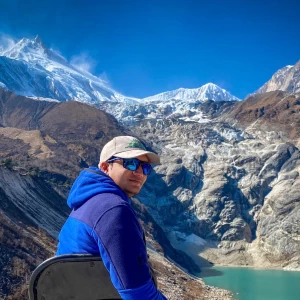The best time for trekking in Annapurna is spring (March-May) and autumn (September-November). These seasons offer clear skies and moderate temperatures. This makes the trails safer and more enjoyable. In spring, the hills bloom with rhododendrons. Autumn brings crisp air and panoramic mountain views.
Additionally, the summer season also creates important value.
In this blog, we will learn the best time, weather considerations, and some off-the-beaten paths of Annapurna Trek.
Also, check Tours and Trekking in Nepal
Best Time to Hike Annapurna Circuit
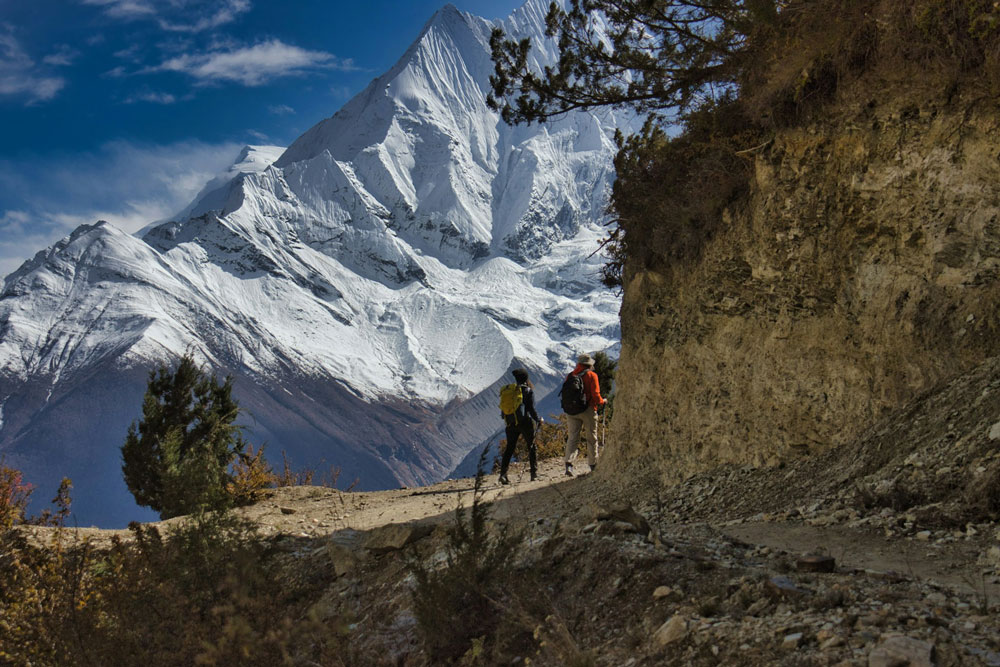
The Annapurna Circuit Trek is a popular trekking trail in Nepal. It circles the Annapurna Range and offers stunning views, including the notable peak of Annapurna I. Trekkers experience diverse landscapes, including lush forests and traditional villages.
Key highlights are the Thorong La Pass (5,416 metres) and the town of Manang. The trek is challenging due to high altitudes and changing weather conditions.
Hike Annapurna Circuit in Spring and Autumn
The best time to trek Annapurna Circuit is in spring (March-May) and autumn (September-November). These seasons have favourable weather. Spring brings mild temperatures and blooming rhododendrons. Autumn is known for clear skies and stable weather. These conditions make the trek safer and more enjoyable.
In spring, daytime temperatures are 10°C to 20°C. Trails are bright with colourful flowers, especially rhododendrons. In autumn, temperatures are cooler, between 5°C and 15°C. Clear skies show beautiful mountain views. The weather is steady with little rain, making the trails easier to walk.
Hike the Annapurna Circuit in the Summer
Summer (June-August) is the rainy season, characterized by heavy rainfall that makes the trails muddy and slippery. However, this season is ideal for those seeking solitude. The rain clears dust from the air and makes the vegetation lush and green. Visibility may be reduced due to clouds, but the landscapes remain vibrant. Proper gear and preparation are necessary for trekking in the rain.

Best Time to Hike Annapurna Base Camp
The Annapurna Base Camp Trek is a popular trekking route in Nepal as a part of Trekking the Annapurna Circuit previously. It takes you to the base of the Annapurna massif, offering stunning views of snow-capped peaks, including Annapurna II. The trek passes through terraced fields, dense forests, and traditional villages.
Key highlights include the breathtaking Annapurna Sanctuary and the vibrant town of Pokhara. The trek is moderately challenging due to the high altitudes and steep climbs.
Spring and Autumn
The best time to hike to Annapurna Base Camp is in spring (March-May) and autumn (September-November). Spring offers mild temperatures and lush, green landscapes. The trails are lined with blooming rhododendrons, making the trek beautiful.
Autumn here is known for its clear skies and moderate temperatures. It also provides excellent visibility of the mountains. Both seasons are ideal for a safe and enjoyable trek.
In spring, temperatures on the trek range from 10°C to 20°C. The landscapes are lush with colourful flowers. This makes the experience vibrant. Autumn has cooler temperatures. They range from 5°C to 15°C. The skies are clear with stunning mountain peak views. The stable weather and minimal rainfall make the trails easier to navigate.

Summer and Winter
Summer and Winter seasons both are equally favourable for ABC trekking. Though, less crowded than the peak trekking season, both these seasons create amazing experiences. In summer, the trekkers walk through the green and clean natural landscapes.
Additionally, winter itself is more crisp to the views. Though cold, the views make trekkers forget every chilly moment. Thus Annapurna trail is slippery though in both seasons. Have proper gear with yourself and you will be able to cover the trail with ease.
The temperature in winter drops below 0 degrees in base camp. Beware of the cold weather during the summer as well as the mountains.
Annapurna Trek Weather and Seasonal Considerations
The Annapurna region has different weather patterns throughout the year. Altitude sickness is a significant concern, especially as trekkers ascend to higher elevations. Each season offers unique experiences and challenges. Understanding these patterns helps trekkers plan their adventures better. Choosing the right season is important for a safe and enjoyable trek.
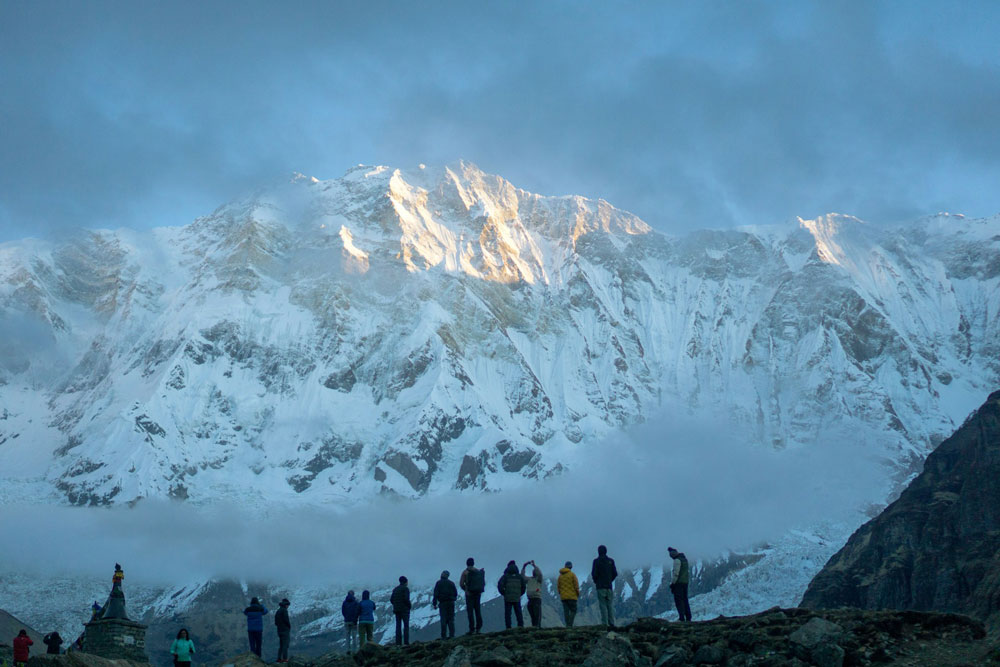
Spring Season (March to May)
In spring (March to May), the weather is mild. Daytime temperatures range from 10°C to 20°C. The trails are filled with blooming rhododendrons. The landscapes are lush and green. Clear skies and stable weather make it an ideal time for trekking.
However, late spring may bring some rain showers. Being prepared for changing conditions is important. Spring is a great time to experience Annapurna trek weather.
Summer/Monsoon Season (June to August)
During summer and the monsoon season (June to August), heavy rainfall is common. Temperatures range from 15°C to 25°C. The trails can become muddy and slippery. Landslides are also a risk, especially in higher areas. Clouds and fog can reduce visibility.
However, the region has become lush and green. This season is quieter, offering more solitude on the trails.
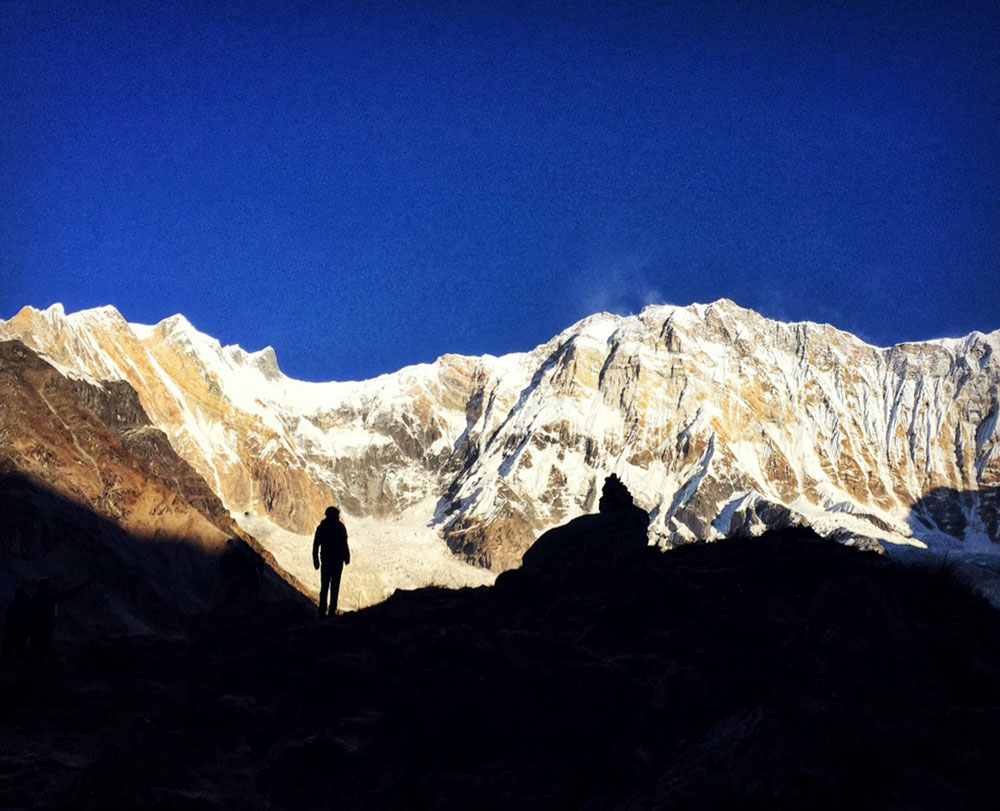
Autumn Season (September to November)
Autumn (September to November) is the most popular trekking season. The weather is stable, with clear skies. Temperatures range from 5°C to 15°C. The views of the mountains are stunning. The air is crisp and refreshing. However, autumn is also the peak season, so the trails can be crowded. Despite the crowds, the excellent weather makes it the best time for trekking.
Winter Season (December to February)
Winter (December to February) brings cold temperatures. At higher altitudes, it can drop below freezing. Snowfall can make the trails difficult, especially at high passes like Thorong La. While the skies are often clear, the cold and snow pose challenges. Proper gear and preparation are essential. Lower altitude routes are more manageable in winter.
Routes and Conditions in Different Seasons

Different routes in the Annapurna region are better suited for specific seasons. The Annapurna Circuit Trek depends on its High passes. The Thorong La is best in spring (March to May) and autumn (September to November). During these times, the weather is clear and stable. This makes crossing high-altitude areas safer.
In winter (December to February), high-altitude trekking is tough. In the monsoon season (June to August), trekking is also difficult. The weather can make the trails challenging. Heavy snow in winter and heavy rain in monsoon can make trails hazardous.
For these reasons, lower elevation routes are safer. Routes like Ghorepani Poon Hill are more manageable. They offer beautiful views without extreme weather risks.
For the Annapurna Base Camp trek, it is the all-time favourable trekking route.
Some Best Trekking Routes in Annapurna During the Summer
Summer in the Annapurna region lasts from June to August. The weather is warm, and there is occasional rain. Lower regions of Annapurna often experience frequent rainfall during this time. However, some areas remain dry.
These dry areas are called rain shadow zones. A rain shadow zone is a dry area on the leeward side of a mountain range. Mountains block moisture-laden winds. One side gets heavy rain. The other side stays dry. These dry areas are great for summer trekking because they have little to no rain.
Nar Phu valley
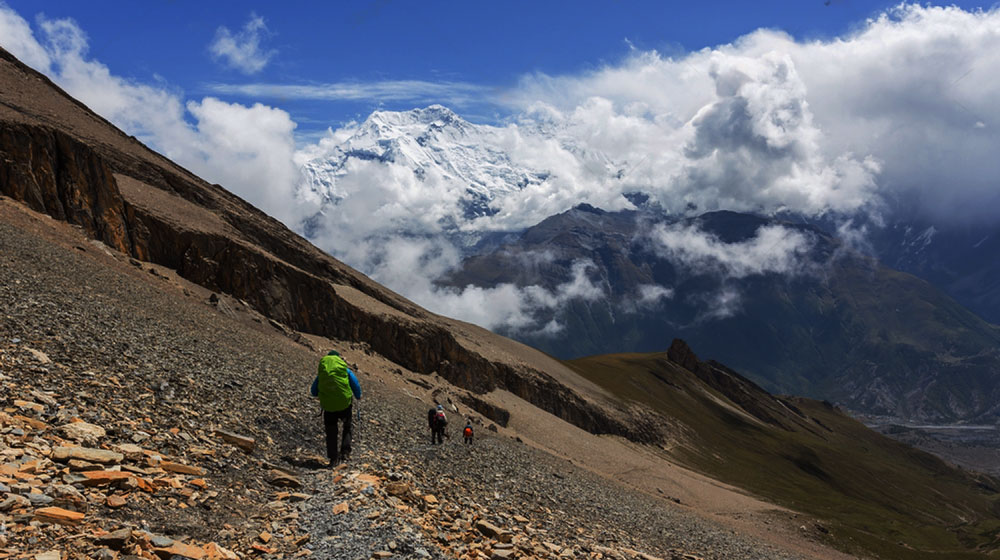
The Nar Phu Valley is located in one of the rain shadow zones. It lies north of the Annapurna mountain range. The valley is situated between the Annapurna and Manaslu regions, close to the Tibetan border. Nar Phu Valley is remote and largely untouched by modern development. Trekkers here experience a unique blend of Tibetan culture and rugged, natural landscapes.
As Nar Phu is in a rain shadow zone, it gets minimal rainfall in the summer. This makes it an excellent choice for avoiding the challenges of the monsoon season.
Mustang
The Mustang region is also in a rain shadow. The Annapurna and Dhaulagiri mountain ranges protect it. Mustang is divided into Lower Mustang and Upper Mustang.
Lower Mustang has arid, desert-like landscapes and ancient cave temples. Upper Mustang is even more remote and isolated. It features dramatic rock formations and deep canyons.
Lower Mustang
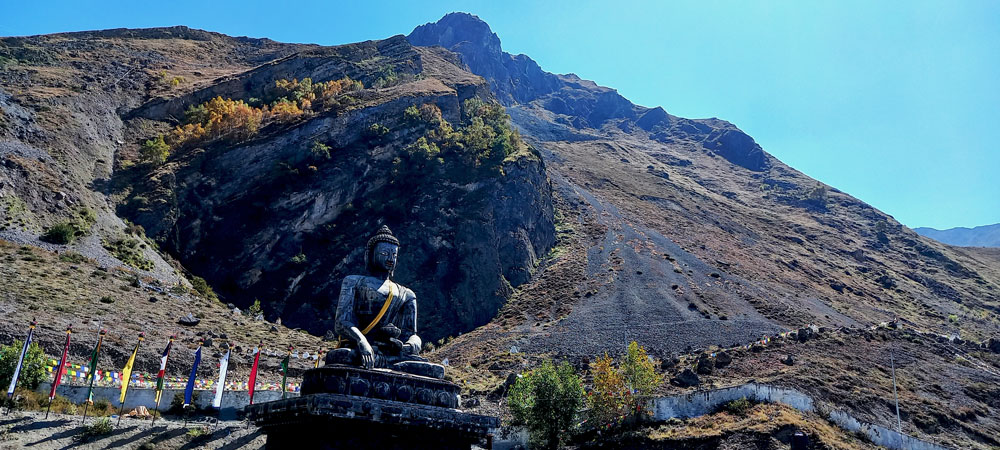 Lower Mustang is a gateway to the Mustang region. Jomsom offers stunning views and a rich Tibetan culture. The famous Muktinath Temple, a significant pilgrimage site, is also located here. The rain shadow effect keeps both Lower and Upper Mustang dry and comfortable for trekking in the summer.
Lower Mustang is a gateway to the Mustang region. Jomsom offers stunning views and a rich Tibetan culture. The famous Muktinath Temple, a significant pilgrimage site, is also located here. The rain shadow effect keeps both Lower and Upper Mustang dry and comfortable for trekking in the summer.
Upper Mustang
Upper Mustang offers a unique trekking and tour experience. It is known for ancient monasteries and traditional Tibetan culture. Minimal rainfall in the summer ensures that trails are accessible. The views are clear. Upper Mustang is isolated and dry. It has a rich culture. These features make it a fascinating place to explore.
Conclusion
The best time for trekking in Annapurna region is especially the trekker's choice. The best times are typically spring (March to May) and autumn (September to November). However, summer treks in areas like Nar Phu Valley and Mustang are also ideal.
Planning your trek according to the season helps you avoid heavy rains. It also ensures clear skies and dry trails. Choose the season that best fits your weather preferences. This will help you make the most of your trekking adventure in Annapurna.








 Lower Mustang is a gateway to the Mustang region. Jomsom offers stunning views and a rich Tibetan culture. The famous Muktinath Temple, a significant pilgrimage site, is also located here. The rain shadow effect keeps both Lower and Upper Mustang dry and comfortable for trekking in the summer.
Lower Mustang is a gateway to the Mustang region. Jomsom offers stunning views and a rich Tibetan culture. The famous Muktinath Temple, a significant pilgrimage site, is also located here. The rain shadow effect keeps both Lower and Upper Mustang dry and comfortable for trekking in the summer.